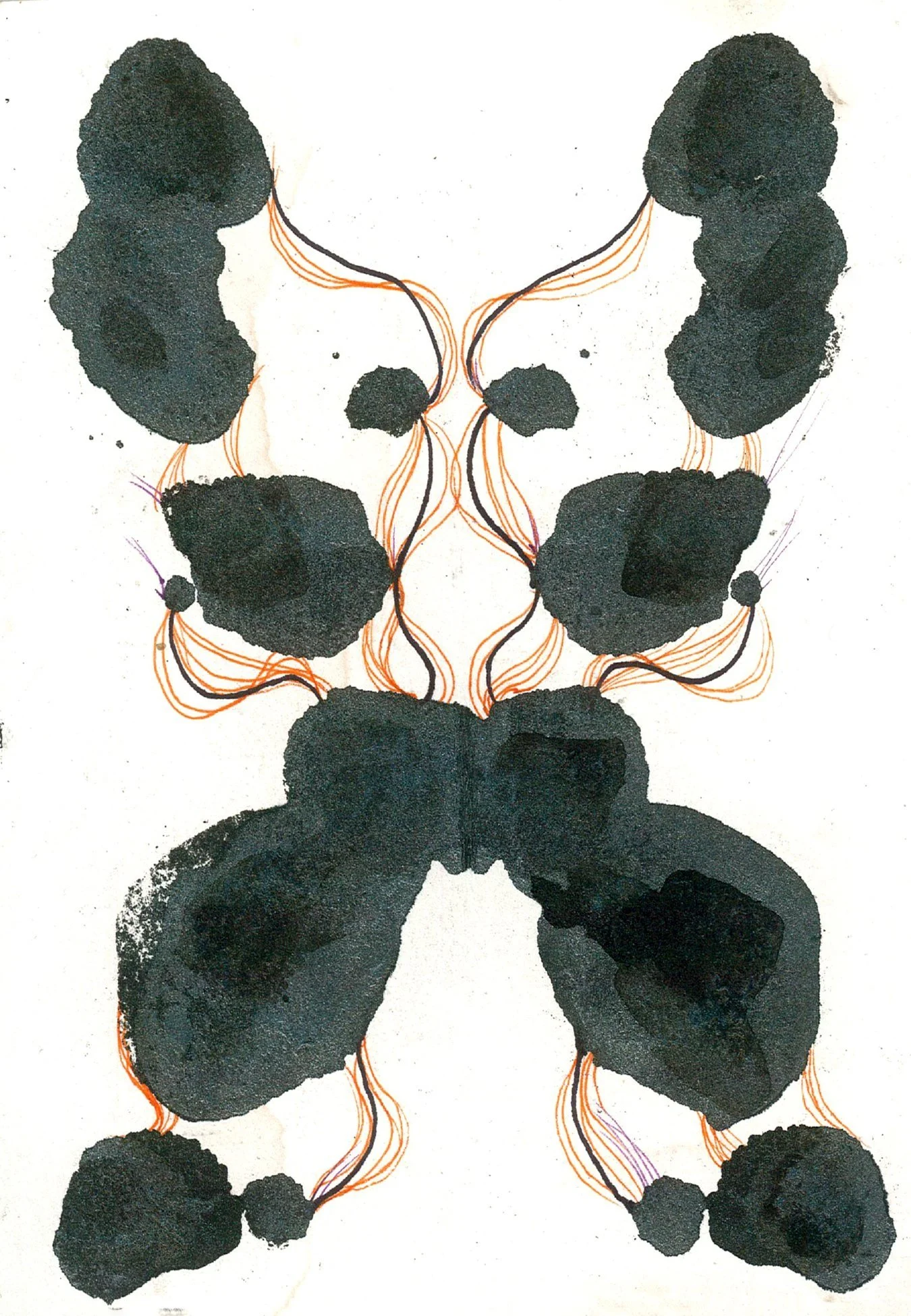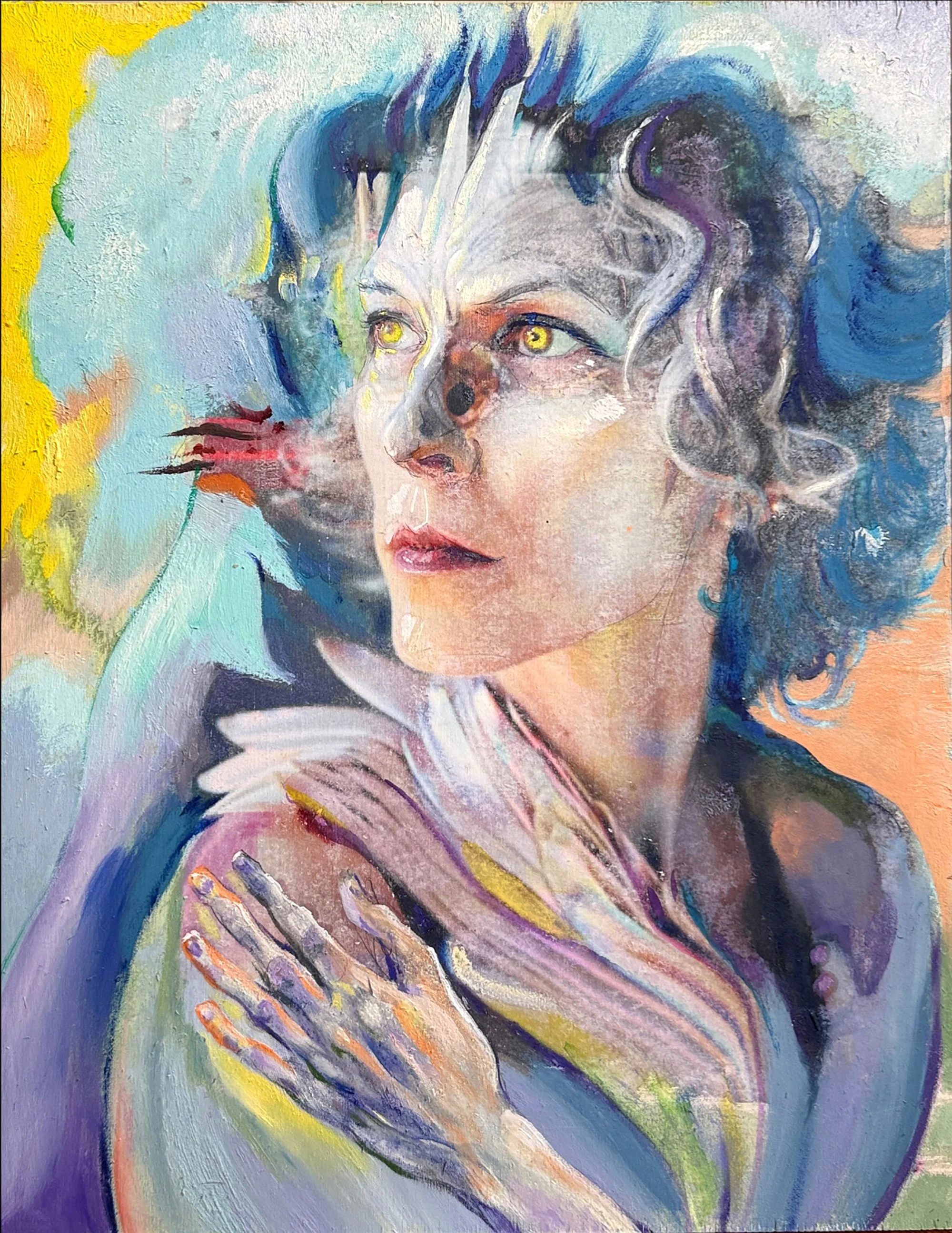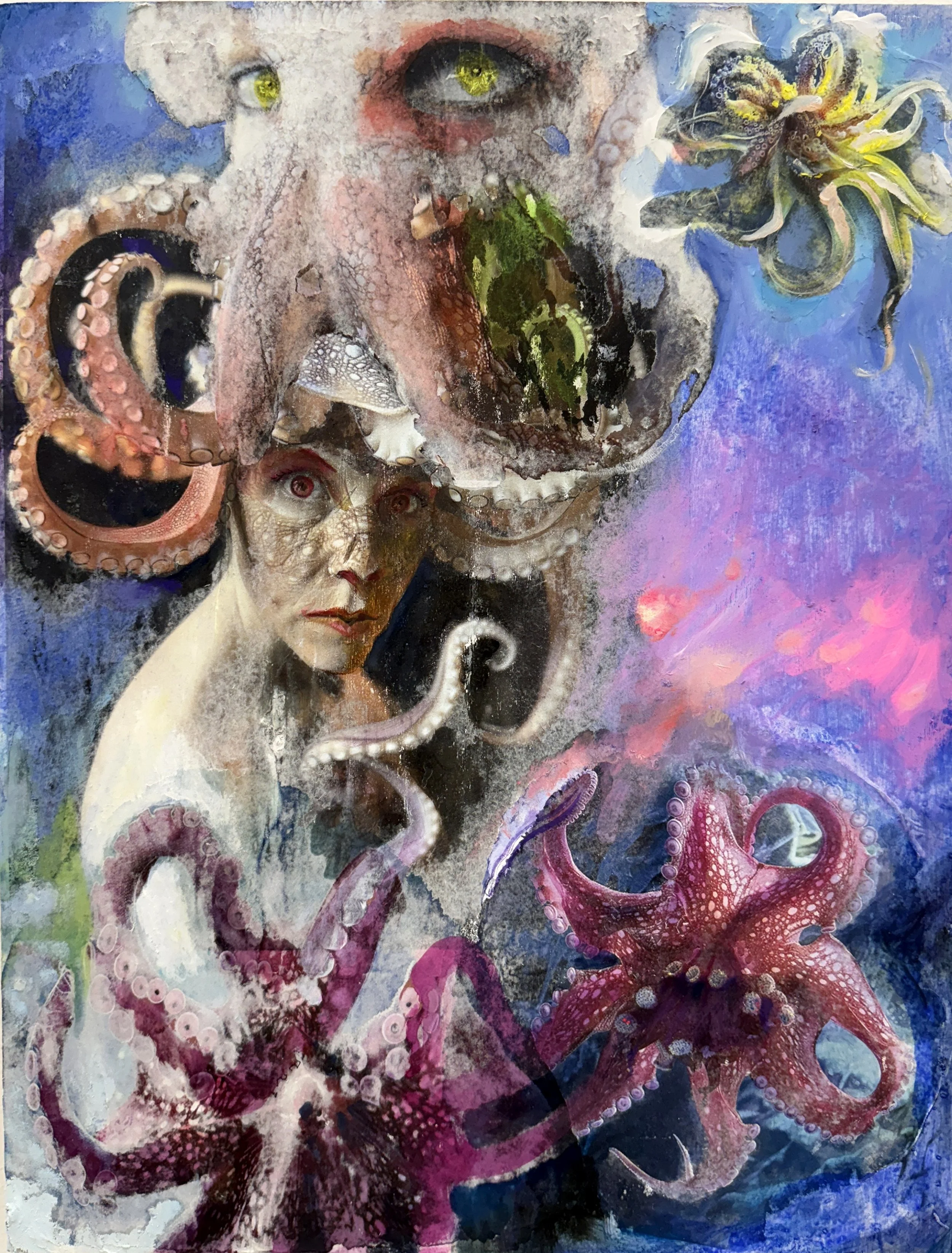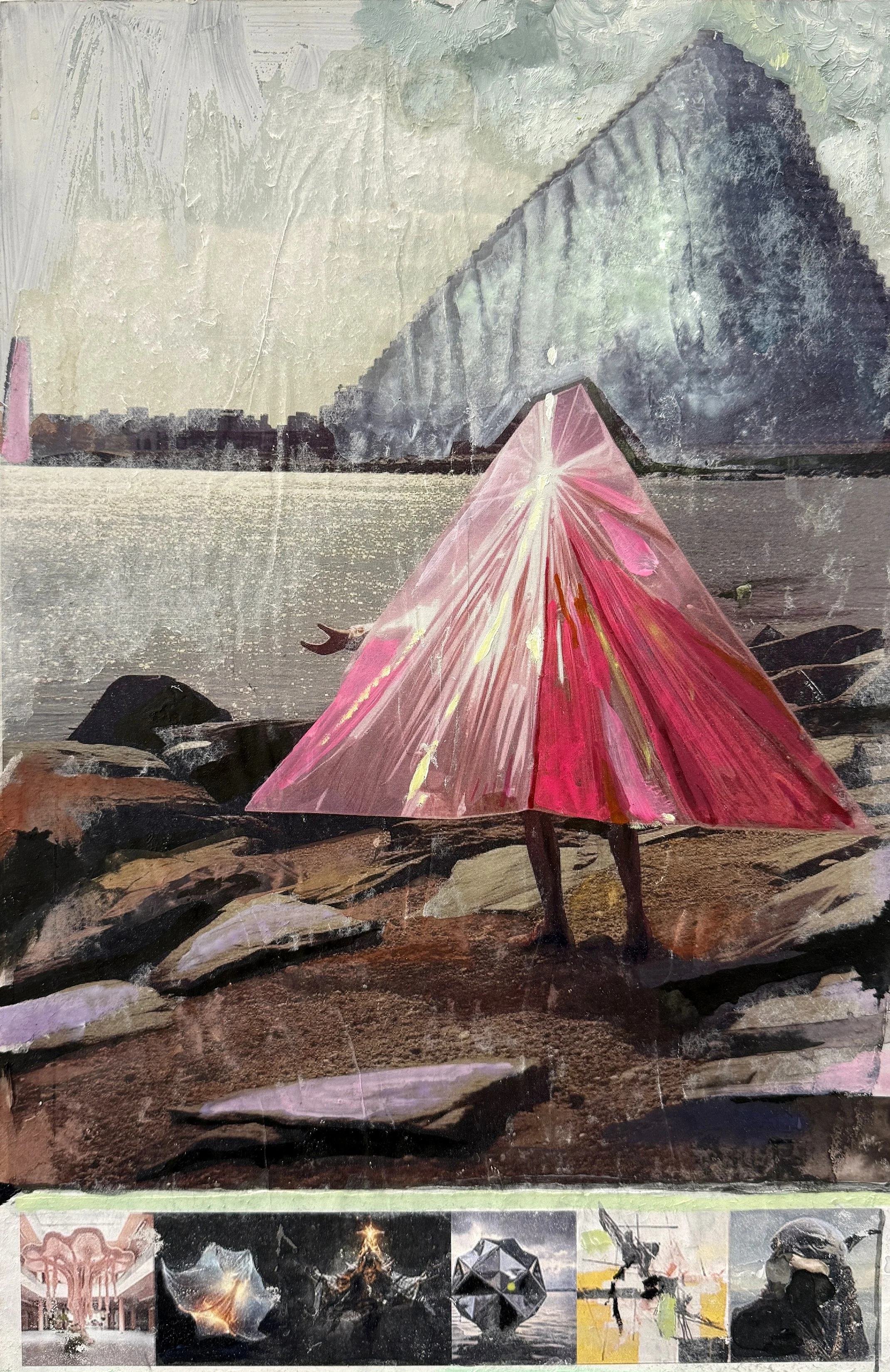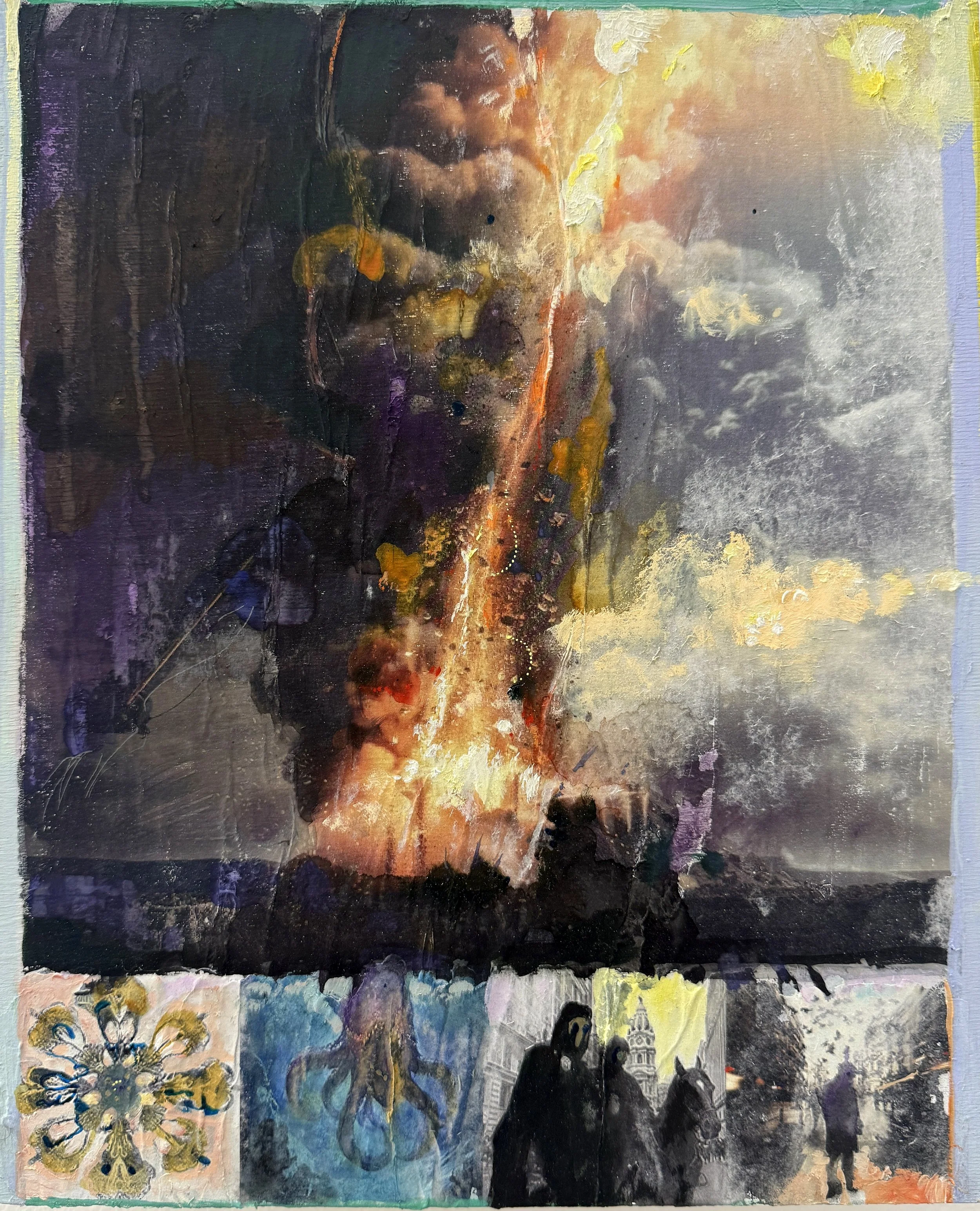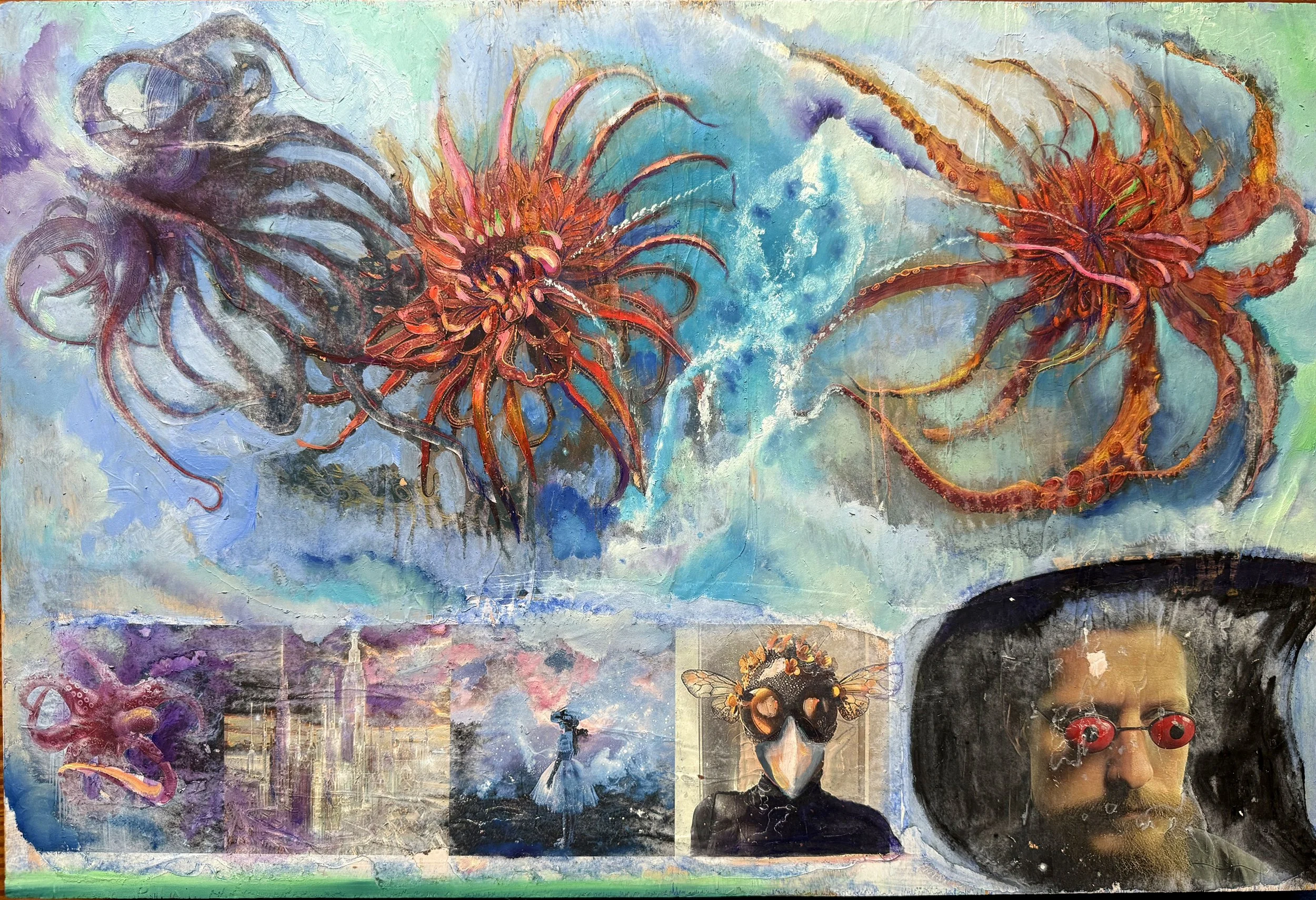Chimaera Gallery
3502 Scotts Lane #2113
Philadelphia, PA 19129
March 8th-29th 2025
Opening March 8th 6-9
Closing March 29 with artist talks and performance by Megan Bridge and Max Kline 2-5
“The heaventree of stars hung with humid nightblue fruit.”
― James Joyce, Ulysses
Transmedia artist Tyler Kline’s exhibition Skybound as Titans is the result of searching, error, iteration, mistakes, endurance, failure, folly, and vision. The artist collaborates with AI to build space ships; the hubris, arrogance, faith, and audacity to undergo such an endeavor is propellent towards a destination.
Sky Bound as Titans unfolds as a multi-dimensional epic, melding mythology, speculative science, and interspecies communion into a compelling meditation on the liminal moment in which we exist—a pivot between collapse and rebirth, the Anthropocene, Chthulucene, and the Sednacene. Channeling a hybrid sequential art narrative that traverses Earth’s environmental crises, Martian industrialization, and telepathic communion with hyper-sentient beings called the Kai-Sawn, Kline crafts a speculative cosmology that invites viewers to consider humanity’s fragile position within an interconnected universe.
AI-assisted portrait paintings serve as one of the sequential narrative currents.The portraits—bearing intricate, biomorphic distortions and vapor-wave growths—represent individuals transformed by their contact with the Kai-Sawn, a telepathic species of cephalopods trapped beneath Europa’s icy crust. These images evoke a narrative of mutual evolution, where humans and other beings merge minds, unlocking interstellar potential through shared consciousness (Geistdenkenheit).
The technique folds into the conceptual framework of the exhibition, braiding technology, biology, and spiritual mythologies. The technical journey of the portraits consists first of photographing the sitters. The digital photographs are entered into Midjourney, coupled with text prompts, the AI bot responds with forms that are printed out on an inkjet printer. These prints are then transferred to board using a gesso printing method, and the image becomes a support for an oil portrait painting that becomes a soft-machine communion between sitter and painter. Photographs of the end results create the next image iteration in a positive feedback loop. In conversation with Western art history, Kline nods to the Baroque tradition of dramatic yet personal portraiture while subverting it with surreal, hybrid-sapien aesthetics. The meticulous attention to detail in the painted faces recalls German New Objectivity, particularly the movement’s focus on clarity, precision, and subjective psychological intensity. Yet, Kline tempers this mediated objectivity with layers of emotional vulnerability, reflected in the expressive eyes and gestural brushstrokes surrounding the figures.
CAD-aided, 3d print modeled, lost wax cast bronze sculptures embody Kline’s conceptual framework of materializing myth, craft, and science, acting as artifacts and figures from a speculative future cosmology. The sculptures, such as abstracted heads of mythical entities and speculative technological forms, function as relics of a not-yet-realized epoch. The intricate latticework and alien materiality of the cast bronze is a poetic metaphor, forming the architecture of the Iron Cities of Mars and shaping the organic complexity of the Kai-Sawn themselves. The inclusion of braided, human hair in some sculptures heightens the tension between the signatures of human DNA and the post-human, creating a dance between carbon based life, silicon based life, and polymer entities.
Kline’s visual language oscillates between the ancient and the speculative, evoking a synthesis of mythos, theoretical physics, and contemporary technology. The turquoise patinas and intricate textures of the sculptures suggest an otherworldly membrane, as if these forms were artifacts excavated from a distant future. Meanwhile, the portraits’ luminous skin tones and textural disruptions point toward beings in flux, undergoing a profound transformation, the materiality of their being indistinguishable from the theoretical aesthetics. The forms carry the weight of a digital and visceral journey, resulting in palimpsest that speak of cyphers and sigils.
This aesthetic duality reflects the exhibition’s conceptual narrative: the emergence of the Sednacene, an epoch where humanity transcends its destructive tendencies and collaborates with other species to explore the cosmos. Kline draws on post-humanism and fluid identities, suggesting that survival in the Sednacene depends not on dominance but on interspecies kinship and adaptability—a far cry from the colonial ambitions that underlie humanity’s historical conquests. Issues of post-colonialism are critiqued, satired, and meditated upon; the Iron Cities of Mars is both utopic and a mirror into humanities hunger, raising questions about the ethics of planetary colonization and the persistence of extractive ideologies.
The narrative emphasizes the necessity of communion with other beings, reflecting a growing recognition of non-human intelligence and its implications for science, ethics, and spirituality ; probing humanity’s role in the cosmic order and using the concept of autopoiesis through an interactive journey transforming new media into intuitive viscera. The experience invites viewers to step into a world of flux, where humanity’s destination is arrived at not by domination but on the wings of symbiosis, adaptability, and radical imagination. In doing so, Kline offers a glimpse of a future where the shadows of our present crises are cultivated in service to the boundless potential of collective transformation.
…Philosophy has an affinity with despotism, due to its predilection for Platonic-fascist top-down solutions that always screw up viciously. Schizoanalysis works differently. It avoids Ideas, and sticks to diagrams. Networking software for accessing bodies without organs BwOs, machine singularities, or tractor fields emerging through the combination of parts(rather than into) their whole: arranging composite individuations in virtual/actual circuit, They are additive rather than substitutive, an immanent rather that transcendent: executed by functional complexes of currents, switches, and loops, caught in scaling reverberations, and fleeing through intercommunication, from the level of the integrated planetary systems ti that of atomic assemblages. Multiplicities captured by singularities interconnect as desiring-machines: dissipating entropy by dissociating flows, and recycling their mechanisms as self assembling chronogenic circuitry…nothing human makes it out of the near future. - Nick Land, Meltdown, Fanged Noumena
